How to create a luxurious home without overspending: Singapore designers share their design tips
Even for those with means, rising renovation and construction costs are prompting a more thoughtful approach to design. Singapore’s top architects and interior designers share smart, stylish ways to create a sense of luxury – without the excess.
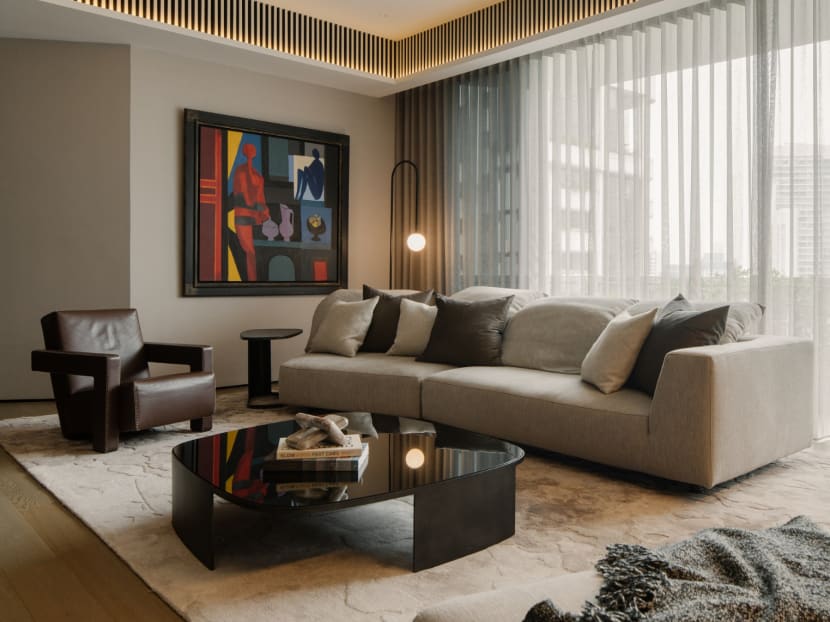
Great design isn’t about how much you spend – it’s about where and what you spend on, and why. (Photo: Studio IF)

This audio is generated by an AI tool.
In recent years, inflation, higher material costs and increased labour expenses have caused a surge in renovation and construction costs. So much so that even well-heeled homeowners are now considering budget-friendly options. After all, every dollar saved is one that can be invested.
Besides, luxury doesn’t have to mean lavish. It can be measured in restraint, proportion, lighting, materiality, and above all, intention.
We asked some of Singapore’s most respected architects and interior designers: How can you make your home look and feel luxurious, without necessarily spending big bucks? Their answers prove that great design isn’t about how much you spend – it’s about where and what you spend on, and why.
From strategic lighting and custom touches to styling choices that instantly uplift a space, the following golden rules are for those who appreciate refinement, yet also recognise that true elegance lies in knowing when to hold back.
Whether you’re building a landed home or refurbishing an apartment, these insider insights show that making smart design decisions – like luxury itself – never goes out of style.
FIRST IMPRESSIONS COUNT: ARCHITECTURAL FEATURES THAT PACK A PUNCH
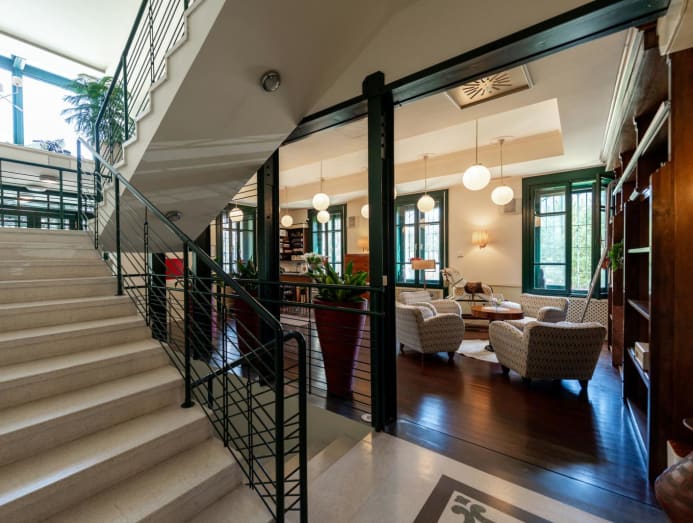
For those with landed properties, investing in key structural features can heighten curb appeal and interior elegance.
“The entryway sets the tone,” offered Lionel Leow, founding partner at TA.LE Architects. “A well-composed entry, framed by proportion, landscaping and material, signals quiet luxury before you even step inside.”
Inside the home, staircases are sculptural opportunities. “A well-detailed stair, even a modest one, can become a centrepiece,” he added.
Berlin Lee, founding partner of Formwerkz Architects, agreed. “Staircases are always charming, especially in double-volume spaces. If the budget is constrained, I will focus less on the facades but add a sense of entry, highlighting the staircases.”
As for the facades, it’s best to use timeless materials and well-layered textures that weather beautifully and honour the home’s surrounding context. After all, nothing says “old money energy” like a home that looks effortlessly elegant through the decades.
IT’S ALL IN THE DETAILS: SMALL ARCHITECTURAL TOUCHES, BIG LUXE IMPACT

You don’t need an oversized marble feature wall to make your home feel high-end. Often, it’s the small details that create that unmistakable aura of sophistication. Think of them like Hermes saddle stitches: If you know, you know.
“Clean lines and thoughtful proportions cost nothing,” maintained Lionel. “But they instantly elevate a space.” He pointed to understated features like recessed skirting, frameless doors and shadow gaps as examples of minimalist luxe. “They give a crisp, tailored edge that’s associated with high-end design.”
For Hyphen Architects principal Chaw Chih Wen, it’s details like flushed skirting, groove lines instead of silicone at join lines, and aligning key architectural details like doors and handrails. According to him, these adjustments “give a sense of visual cohesion. The cost isn’t in the materials; it’s in the coordination.”

Christina Thean, director of Park + Associates, agreed. “The importance of detailing and terminations cannot be overstated,” she said. Even the way curtains are done makes a difference. “Full-height window treatments [such as] spanning the curtain wall-to-wall can create a luxurious feel, giving the illusion of width.”
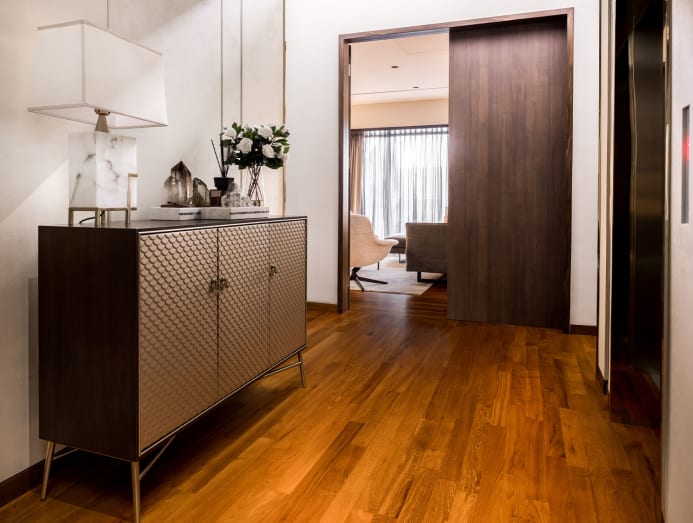
For a finishing flourish, Terri Tan, design director of Designworx Interior Consultant, recommended “removing existing door knobs, handles and taps and replacing them with statement pieces in aged brass or satin titanium”, as well as “installing floor-to-ceiling curtains in linen, velvet or silk-look fabric to add height and elegance”.
These relatively small gestures create a rich, layered atmosphere that feels far more refined.
RETHINK THE BLUEPRINT: HOW SMART SPACE PLANNING CAN MAKE YOUR HOME FEEL LUXE

Thoughtful space planning is one of the most powerful – and cost-effective – ways to create that elusive sense of luxury.
It’s not always about adding. Sometimes, the most transformative move is to take things away. The idea is to strip the clutter and let the space breathe. Rene Tan, co-founder of RT+Q Architects, advised homeowners to “reduce unnecessary walls, obstructive doors or sometimes even floors. Such removal liberates the spatial experience.”
Aligning sightlines – for example, from your front door all the way through to a garden or picture window – can instantly create a sense of calm, openness and flow, said Lionel.
For homeowners concerned about the lack of physical partitions such as walls, Chih Wen suggested asking themselves if their living zones can be defined by materials, lighting or objects instead. For him, it’s all about creating subtle transitions instead of hard divides.
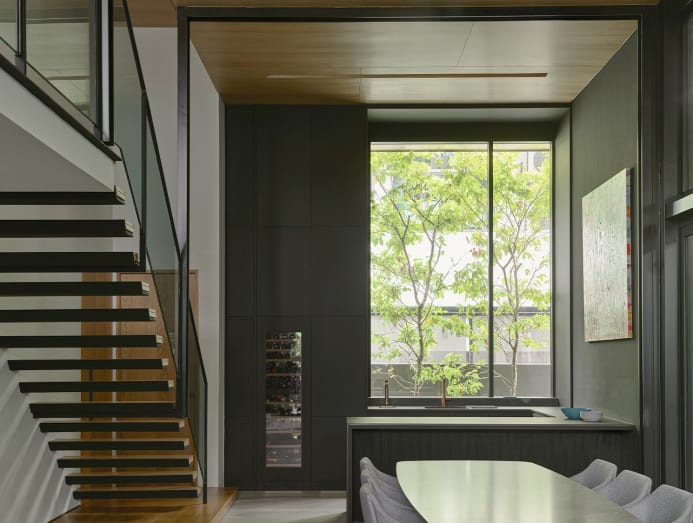
However, knocking down every wall isn’t a one-size-fits-all solution. Christina urged restraint. “More isn’t always more. Larger spaces don’t necessarily translate into luxury. Instead, look at what makes a space ‘feel’ larger – natural daylight and ventilation, higher ceilings etc, and where possible, introduce more of these in, or highlight them.”
THE ART OF THE UPGRADE: REFURBISHING FOR UPDATED ELEGANCE
Not every home needs a tear-down to glow up. For owners of older private properties – or new-build condos, for that matter – the secret to luxury isn’t a full-gut renovation. Rather, it’s knowing what to keep, what to tweak, and how to layer in refinement.
Berlin had a sentimental take: “If the dated condo still belongs to the original owner, there’s usually something worth remembering. That [memory] is priceless and can be captured [in the refresh].”
Chih Wen suggested looking at the building materials themselves. Some finishes, like certain marble mosaics, are no longer in production, so “if we could conserve and integrate them into the new design, they could become a priceless rarity which is also a nod to the past.”
What about new-build condos, fresh from the developer but lacking soul? Ethan Lin, founder of interior design studio TE-EL shared a smart, cost-conscious tip: “Typically, the flooring [such as marble or parquet] is polished. It’s costly and wasteful to replace them. We would recommend honing them to achieve a matte finish, which helps to create a subtle, calming base that feels more elevated and is easier to layer on.”
LUXE FOR LESS: COLOUR AND MATERIAL PALETTES THAT LOOK EXPENSIVE, BUT AREN’T
Creating a luxe interior isn’t about throwing money at the costliest materials; it’s about making clever choices, ones that deliver elegance, durability and longevity. According our experts, you can have champagne style on a craft beer budget.
Take porcelain tiles, for example. Thanks to technology, today’s porcelain can mimic the look of natural stone, down to the veining and texture, said Berlin. They’re easy to clean, non-porous, and efficient to install. Plus, large-format versions are now more accessible.
Microcement and plaster finishes are another insider favourite. For Lionel, they give a monolithic, gallery-like feel at a fraction of the cost of stone.
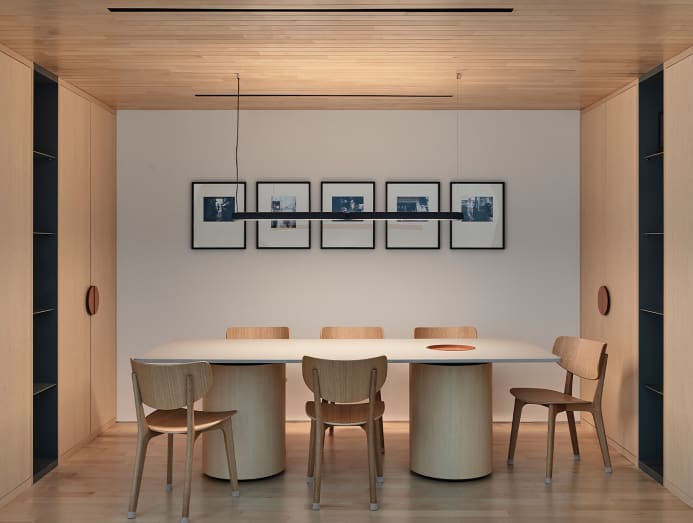
And don’t underestimate the power of humble materials done well. Chih Wen pointed to how “industrial” materials like perforated metal sheets or concrete can feel luxurious, given the right amount of detail and care. Japanese Pritzker Prize winner Tadao Ando made concrete a poetic material, he said.
Then there’s mirrored surfaces. By amplifying light and space, they create a sense of multiplicity and sleekness, said Rene. For Yanika Gunawan, design director of Parenthesis Studio, they’re especially useful in compact spaces where visual depth is needed. Place a few mirrors at strategic locations and voila, your modest room or apartment suddenly feels like a penthouse.
For fans of wood textures, Christina suggested classics like plywood – in raw or lightly finished form – for warmth and texture. It’s cost-effective and ages beautifully, if you’re open to their natural patina.
But wood doesn’t have to hail from forests or timber yards either. Laminates can now convincingly imitate wood veneer or even brushed metals, stated Gwen Tan, founder and principal of Studio IF. If used smartly – in accents, high-up details, or recessed areas where no one will get too close – you can’t tell the difference.

Colour, too, makes or breaks the luxe illusion. Tone-on-tone palettes such as taupe, grey or cream, said Terri, always read expensive. And homeowners can enhance this base with jewel-toned accents or subtle metallics. Just steer clear of harsh contrasts and loud primary colours.
Larry Lim, Summerhaus D’zign’s managing partner, has done countless tests comparing bright and darker colour schemes. His firm found that darker palettes almost always come out looking more high-end. Think forest green, charcoal or navy – colours that exude quiet opulence.
LET THERE BE LUX: LIGHTING CAN UPLIFT A SPACE WITHOUT BREAKING THE BANK
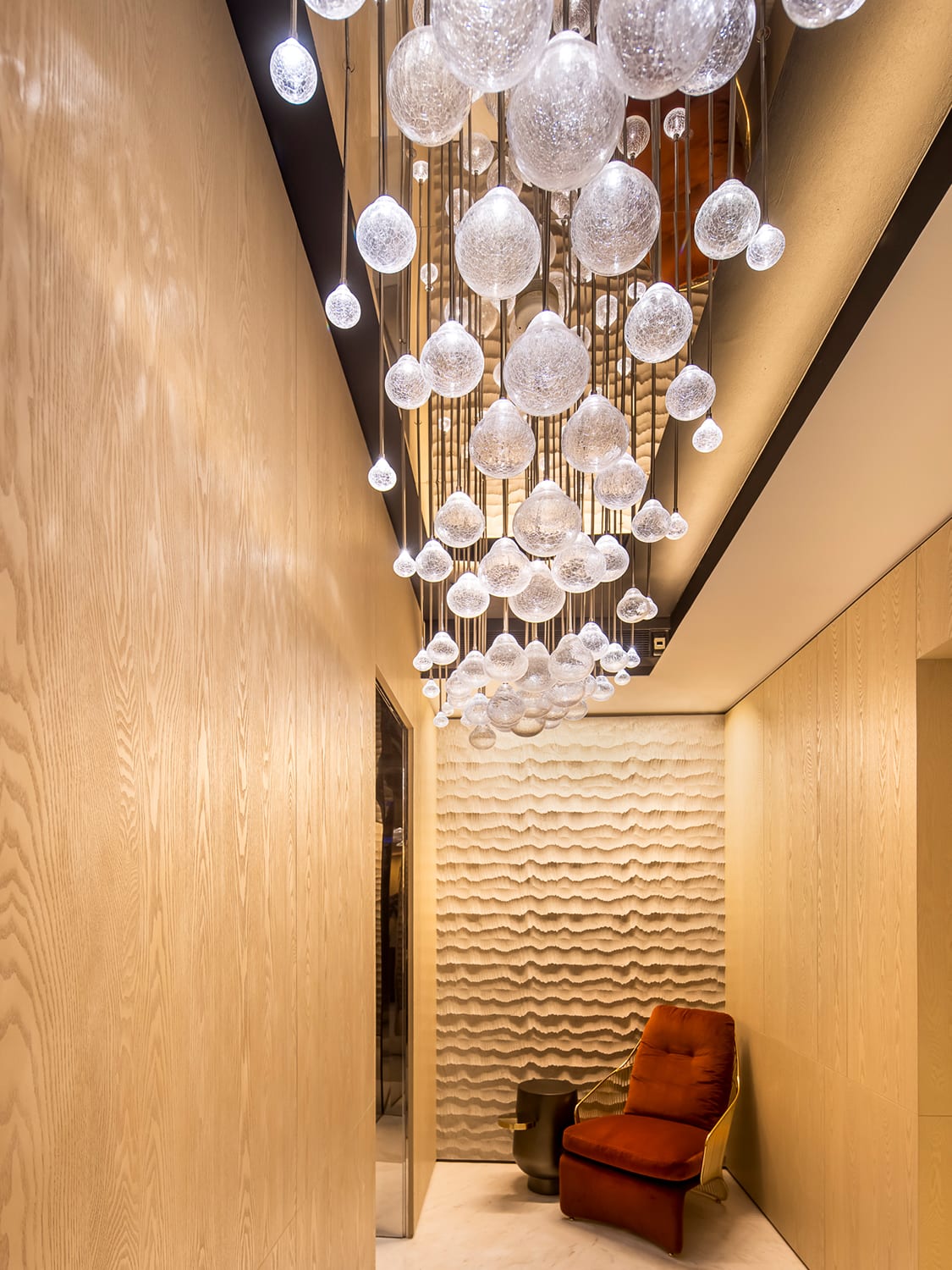
Lighting punches far above its weight. It doesn’t just illuminate a room – it sculpts mood, creates intimacy and lends spaces an understated opulence. Getting your lighting plan right is one of the most effective, not to mention affordable, ways of ennobling a space.
Our design experts agreed that homogenous lighting is a definite no-no. Instead, aim for three types of lighting in a room: Ambient, task and accent. Ambient lighting provides overall illumination; task lighting focuses on specific activities such as working, reading, or cooking; and accent lighting highlights certain features or objects, such as artworks or architectural details.
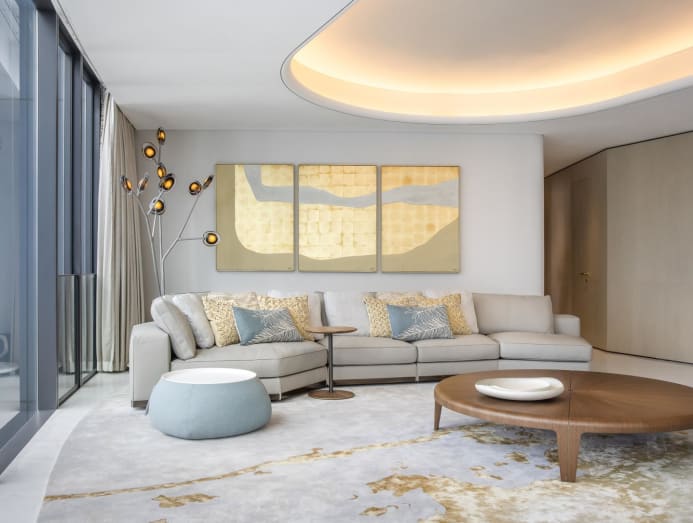
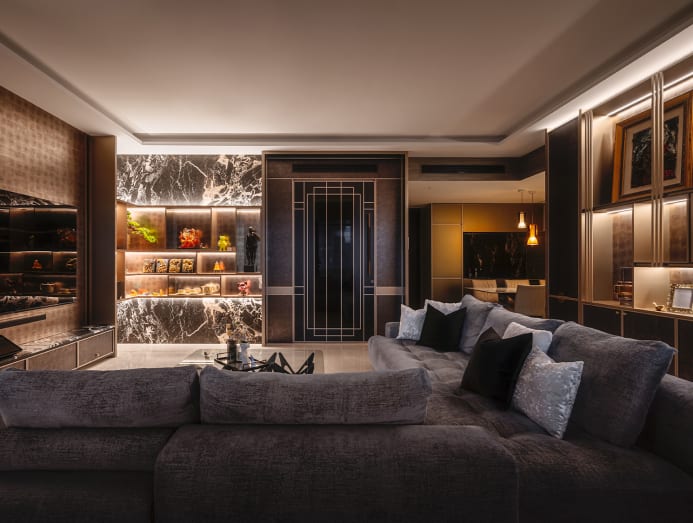
In practice, this means embracing a blend of ceiling downlights, chandeliers or pendants (ambient); table lamps, floor lamps or reading lights (task); and spotlights or wall sconces (accent).
Christina also recommended paying attention to colour temperature – “2700K [warm white, similar to traditional incandescent bulbs] to 3000K [cooler, more neutral] is preferred for a cosy home,” she said.
Gwen added that homeowners can go one step further with tunable/dimmable lights, which “allows you to transform a single space from ‘task’ to ‘mood’ setting without having to change all your lights.”
CUSTOM TOUCHES, LUXE RESULTS: FURNISHING WELL WITH A MIX OF HIGH AND LOW
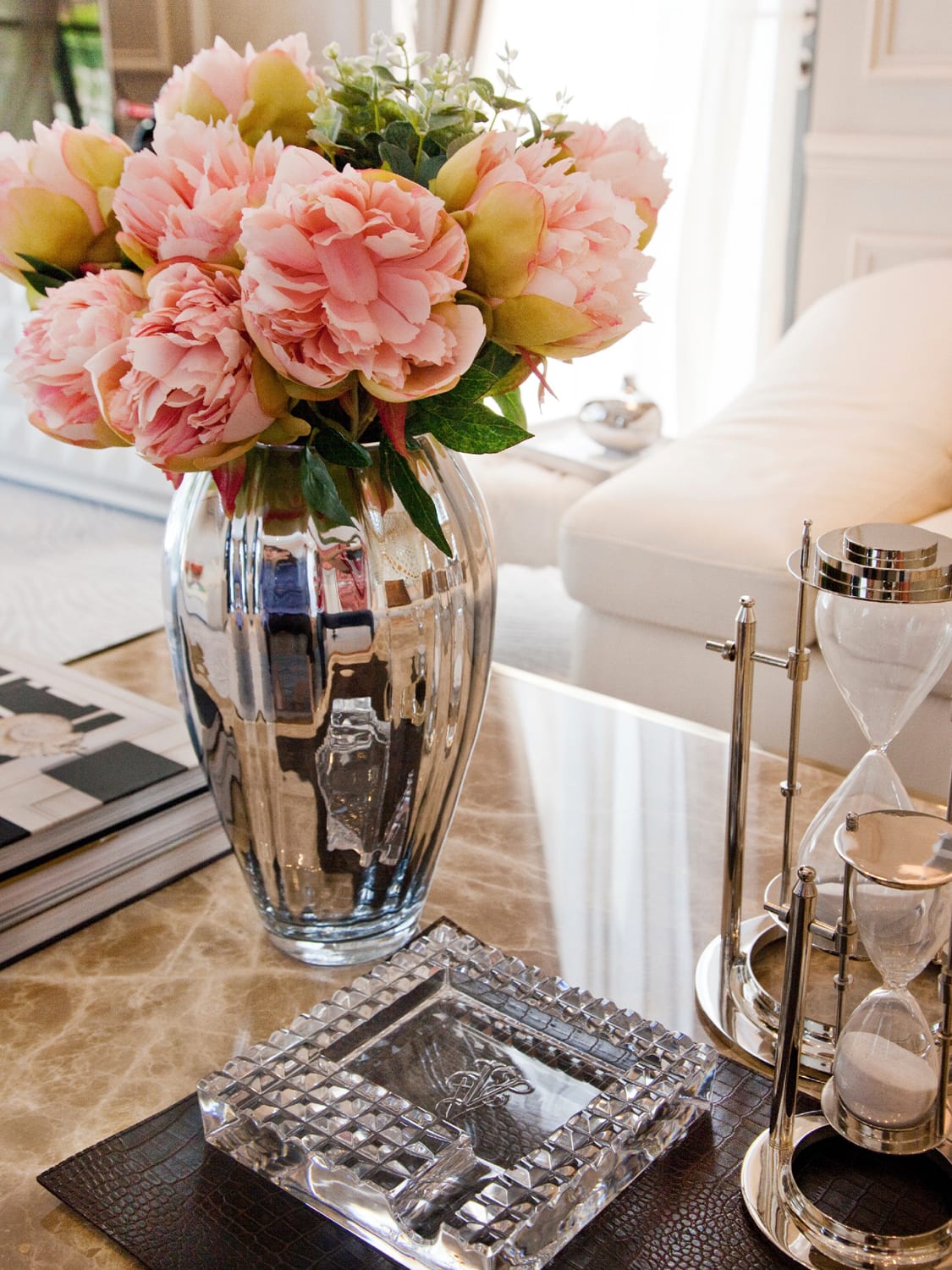
In the hands of a good designer, even a humble Ikea shelf can become part of a bespoke, high-end narrative.
“Ikea is well known for having a durable racking system,” said Yanika. “Some of our clients actually buy the Ikea racking, then have our contractors respray the finishes to match the rest of the built-in carpentry. This is a good way to bring some cost down.”
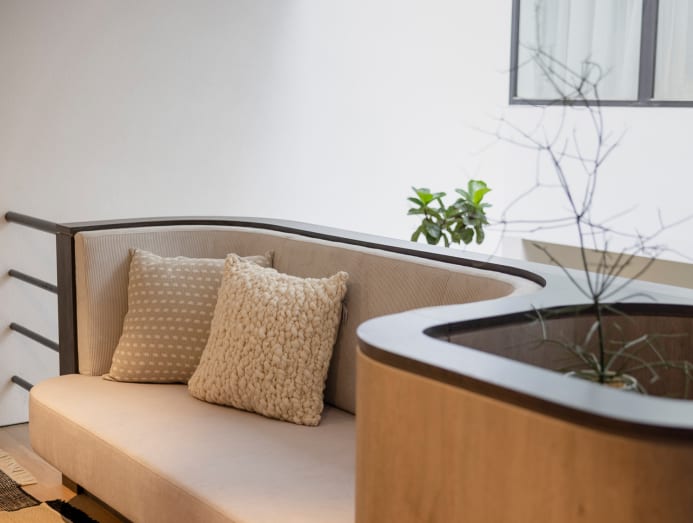
Enhancing the everyday is a theme that runs through many of her smart suggestions. “We could also add a nice top to the shelving such as marble to elevate the look even more.” Another trick is to add a marble top to an affordable wooden dining table.
And the power of customisation isn’t just in brand-mixing; it’s also in honouring what you already have. “We often encourage clients with tighter budgets to reuse existing furniture through re-upholstery, to add a layer of personality,” said Yanika. An armchair reimagined in a fresh fabric or a well-loved sofa in a bold new textile tells a story far richer than any showroom piece.
STYLING TRICKS THAT WHISPER LUXURY
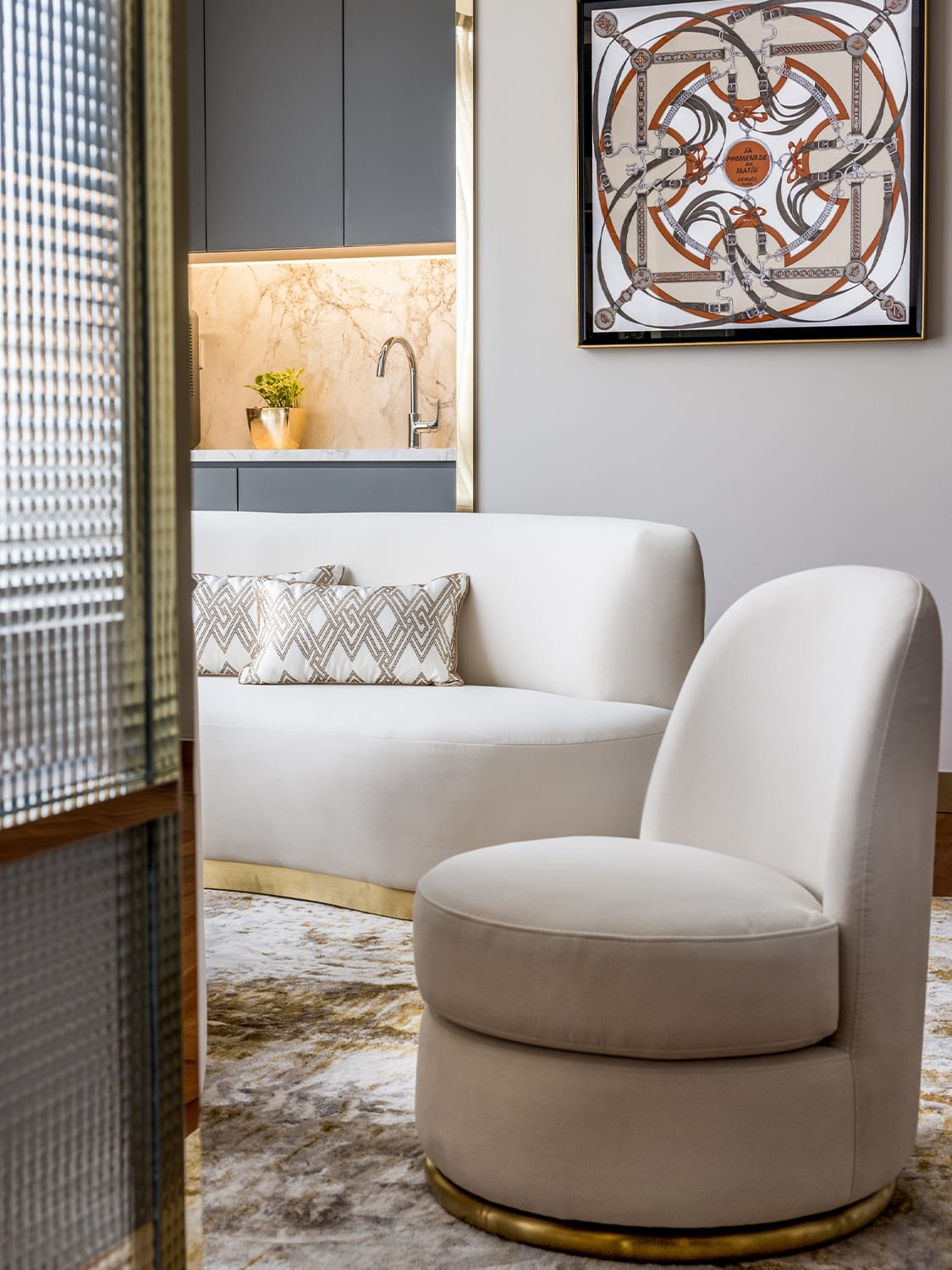
Luxury isn’t always about designer furniture or museum-grade art; it’s about how a space feels. With a few considered tweaks, even the most modest room can give off a rich energy.
One of the simplest styling hacks? Reconfigure your furniture placement. Christina’s suggestion: Don’t pushing everything to the edges of the room, but have them layered instead. “‘Floating’ furniture makes a space feel lighter and less cluttered,” she explained.
A well-placed decorative mirror or a dramatic piece of art can also work wonders. But restraint is key. “Large artwork on a painted wall immediately adds drama,” offered Ethan. “Or choose statement objects such as a quirky mirror.”
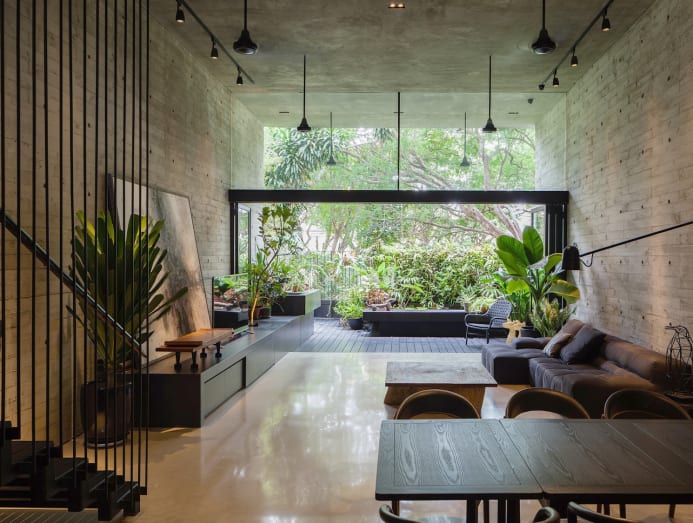
“You don’t need art on every wall,” explained Gwen. “We sometimes casually lean artwork against consoles – it gives the room an air of relaxed sophistication.”
Scent, too, is one of the most quietly powerful styling tools. “Imagine walking into a home that smells like a boutique hotel,” said Yanika. “It sets the tone immediately.” Think diffusers, floral arrangements or scented candles to create that sense of polish and hospitality.
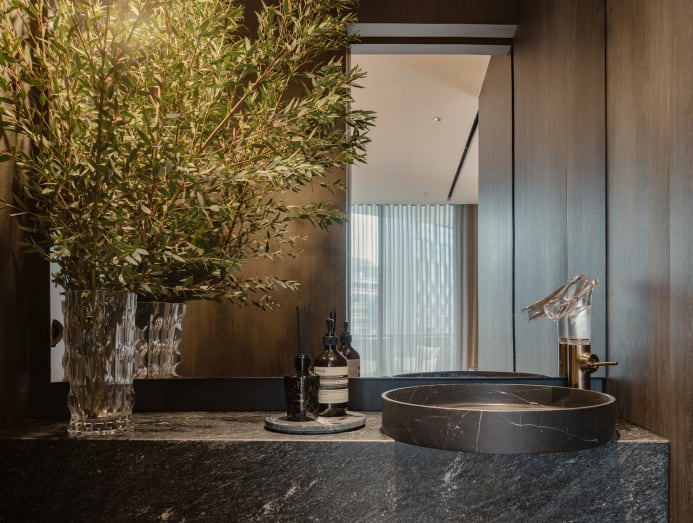
For Terri, small things make a huge difference. “Handles, knobs, even light switch covers – replace them with brushed metal or coloured finishes and the room feels ten times more expensive. She also loves contrast piping on cushions or velvet-lined drawers – those quiet details that no one sees at first glance, but everyone feels.
TRYING TOO HARD? THE LUXE-FOR-LESS MISTAKES TO AVOID
When it comes to making a home look luxe, restraint often trumps opulence, and subtlety outshines flash.
“One common pitfall is equating luxury with excess,” cautioned Lionel. “Too many materials, too many grand gestures – it results in visual clutter and a lack of cohesion. Start by defining what the space should feel like and then remove anything that doesn’t serve that feeling.”
Chih Wen agreed. “Some owners think the more they flaunt, the better… but an expensive mishmash still looks like a mess.”
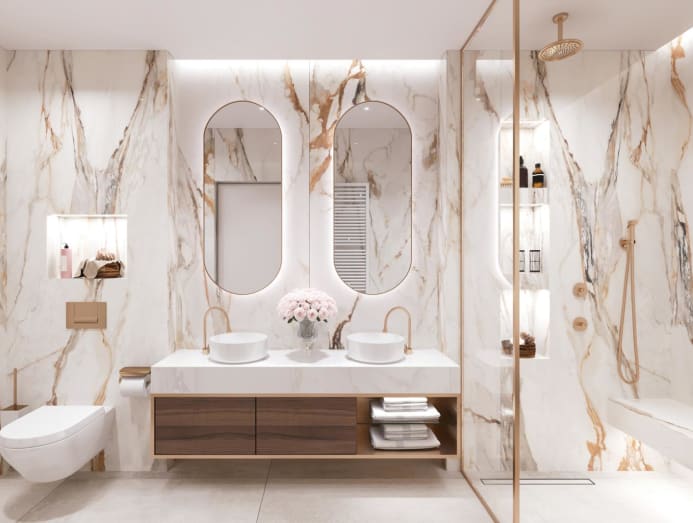
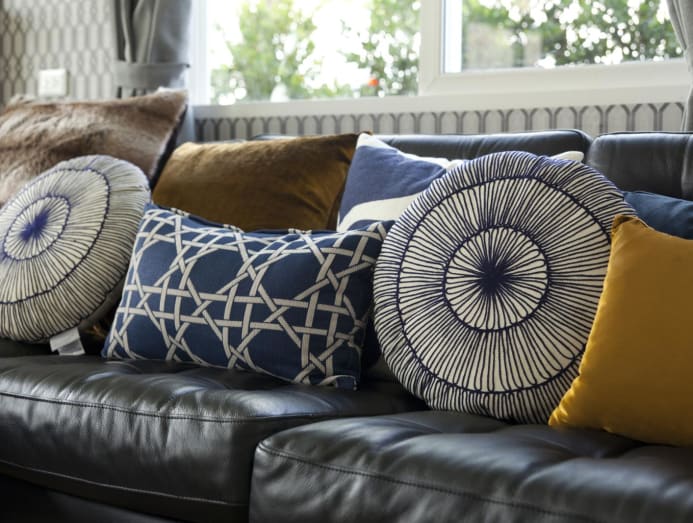
Gwen pointed to brand obsession as another common trap. “We’ve had clients buy beautiful, oversized sofas and then overload them with branded cushions all in the same pattern,” she said. “It ended up feeling more like a furniture showroom – or worse, a logo shrine – than a home.” Her advice? Mix it up.
“A lot of homeowners make the mistake of overfilling their homes,” said Larry. “Too many built-ins, fixtures, or the urge to occupy every wall. It leaves no room for the home to breathe.”
In short, true luxury doesn’t come from loud labels, high-shine finishes or filling every void. It comes from clarity, confidence, and simply knowing when to stop.









